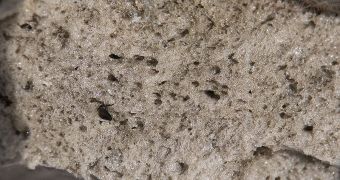Volcanic rocks called pumice may have carried the earliest lifeforms that developed on Earth across vast expanses of water, allowing microbes and other microorganisms to populate far-off, isolated regions, such as islands.
Pumices are highly-porous materials, and researchers have been interested in their potential role in spreading life over the surface of the planet for many years. However, it wasn't until recently that they got the chance to investigate this directly.
On June 4, 2011, the Puyehue-Cordón Caulle volcano in northern Patagonia, South America, erupted. Arizona State University investigator James Elser, who was at the time planning to conduct unrelated fieldwork, seized the opportunity to study pumice in action.
During and after the eruption, ash and pumice were spread all over the place, with some of the rocks making their way into nearby lakes, where they formed floating deposits. Pumice islands are known to have extended for miles on occasions, and are able to cross large bodies of water, such as oceans.
The new study provides additional evidence for a recently proposed hypothesis saying that the first lifeforms ever to evolve on Earth found fertile ground and a safe haven in the pores of volcanic rocks. Therefore, the role that pumice played in our own existence may be far greater than first estimated.
“It has the most surface area of any rock, and it can develop a unique chemistry inside its pores,” University of Oxford expert Martin Brasier comments. While geologists have analyzed pumice in detail, very few biological studies have thus far been focused on the material.
The research Elser and his colleagues are conducting is being funded by the NASA Astrobiology Institute. The team is especially interested in analyzing pumice deposits between 20 and 30 centimeters thick, which develop on the surface of lakes. The expert says this layer resembles floating cement.
Evidence collected thus far by other research teams suggests that pumice was around at least 3.5 billion years ago. That's a very long time, considering that the planet itself is only 4.5 billion years old.
At the same time, volcanic eruptions have occurred constantly since Earth first developed. At times, such as during the Late Heavy Bombardment, volcanic activity was commonplace, and periods of intense activity tend to alternate with those of relative tranquility.
“Pumice looks promising for the origin of life, but we need a whole series of observations to begin to examine its role,” Brasier concludes, quoted by Astrobiology Magazine.

 14 DAY TRIAL //
14 DAY TRIAL //